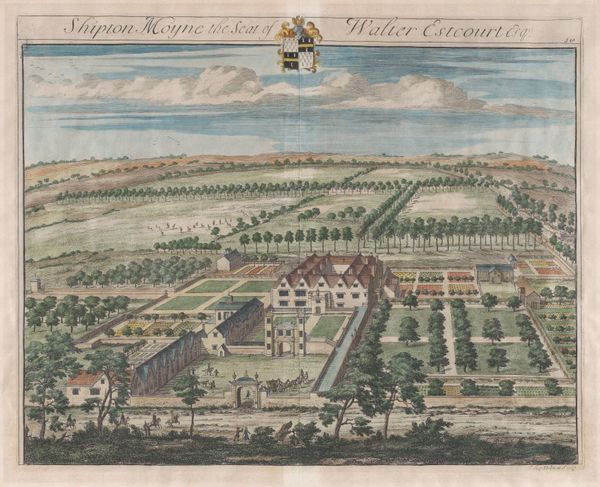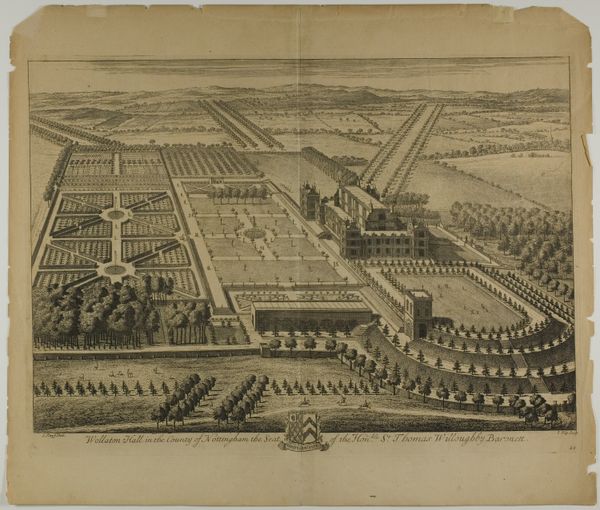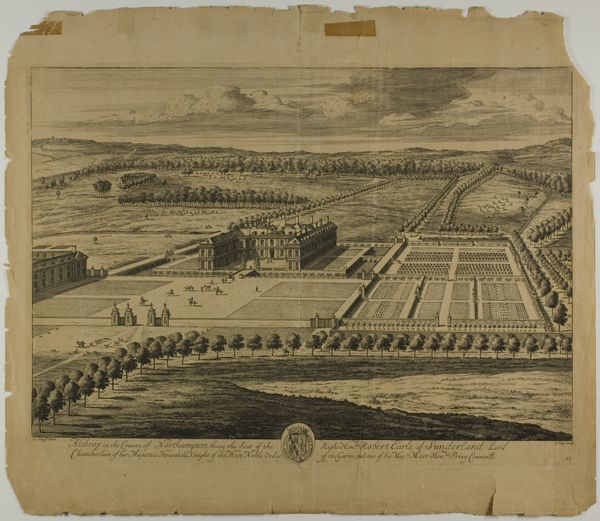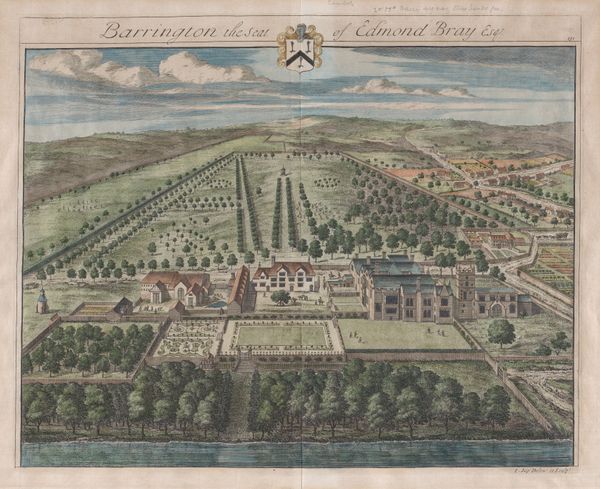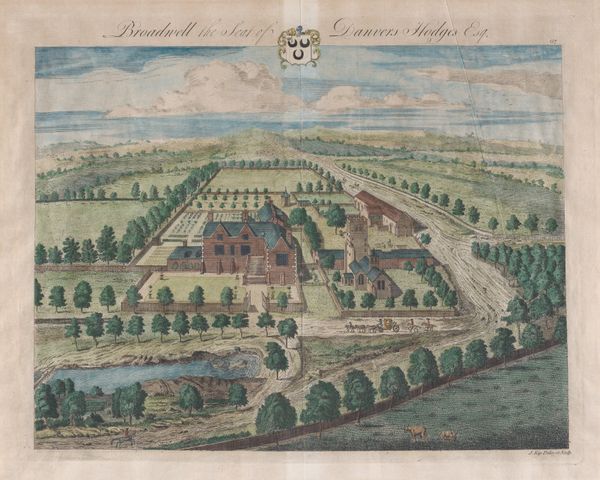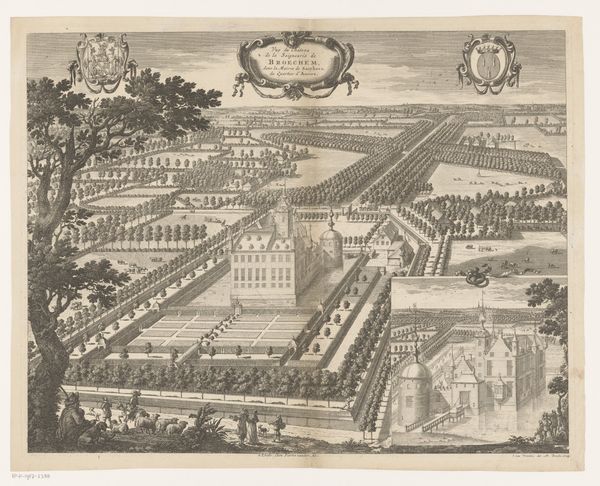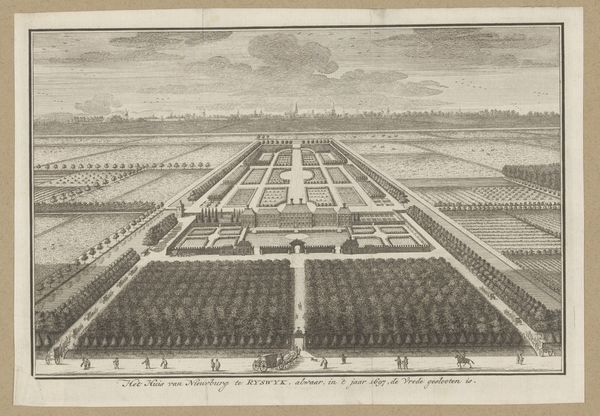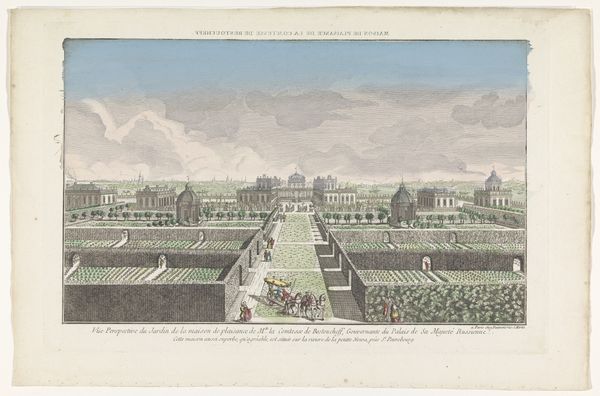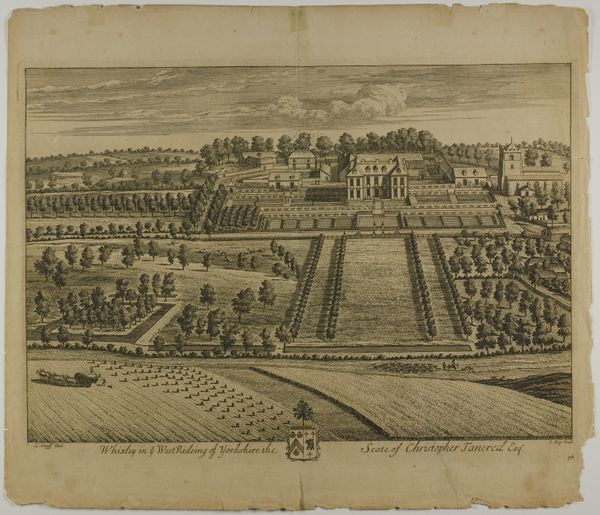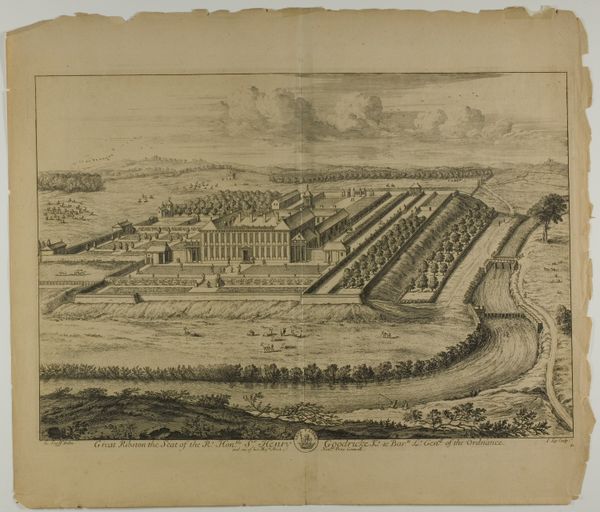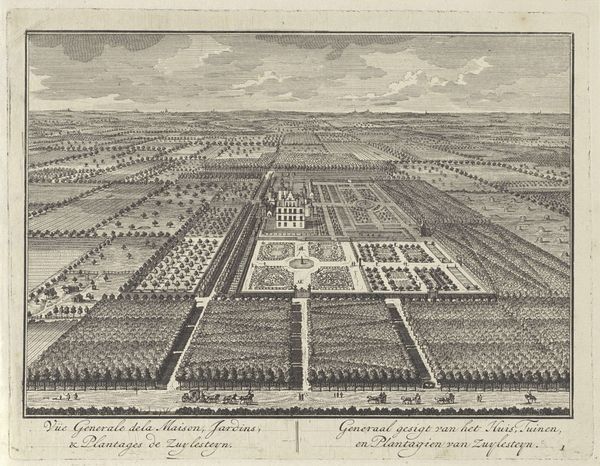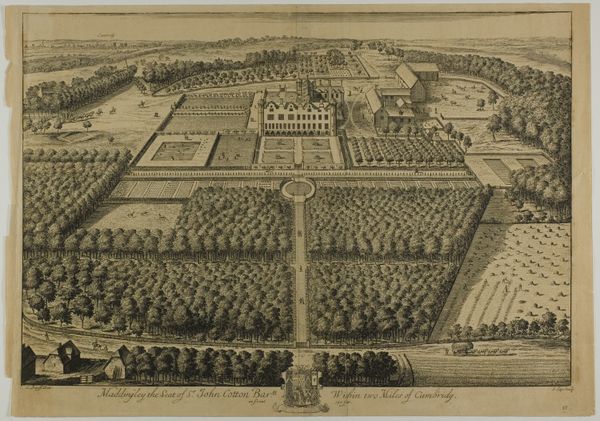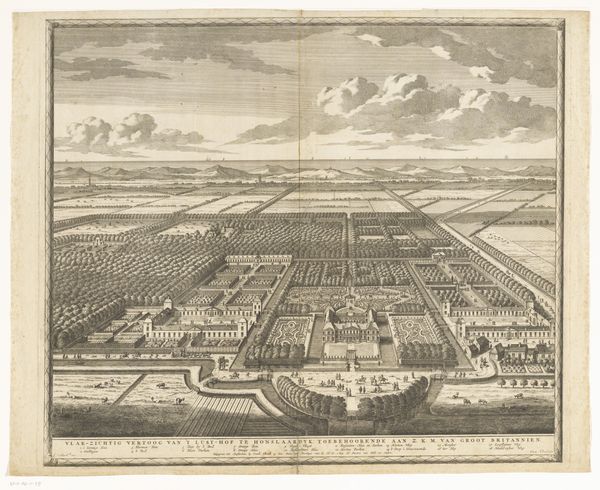
print, watercolor
#
water colours
# print
#
landscape
#
watercolor
#
coloured pencil
#
watercolour illustration
#
watercolor
#
rococo
Dimensions: height 577 mm, width 756 mm
Copyright: Rijks Museum: Open Domain
Curator: Looking at "Gezicht op Dunham Massey in Cheshire" by John Boydell from 1751, housed here at the Rijksmuseum, it offers such a fascinating aerial perspective. Editor: It does have a serene, almost dreamlike quality, doesn't it? The pale washes of color give it that faraway feel, like viewing a cherished memory. I am wondering what specific type of pencil Boydell was using for the thin hatches? It also seems printed... Curator: Well, this work certainly provides an interesting view of the seat of the Earl of Warrington. The image, you’re right, appears to be a print heightened with watercolours. And in the 18th century, estate views like this were status symbols. It's Rococo with watercolor on paper. Editor: That explains it! And the way the land is so deliberately organized… All those gridded gardens, and symmetrical arrangements. It’s such a clear statement of ownership and control, a very intentional display of wealth materialized, through labour, planning, materials. What paper did they use? Do we know? Was is locally produced, and what does it mean if not? Curator: That’s a very pointed take, I admit I hadn't initially considered those aspects so starkly. I tend to get caught up in the details of the architecture, you know, and try to imagine myself strolling through those gardens! Still, you have a point. Someone had to maintain these grounds! What kind of impact does a view like this have on, let's say, someone living in the neighboring village? Do they have any relationship to what this is portraying? Editor: Exactly. Those invisible hands. Without them, none of this is possible. So who were they? How were they being treated, paid? Let's remember that Rococo isn’t just fluffy dresses and ornamentation. All those aristocrats... their status was completely entangled with complex systems of production and, sadly, human exploitation. It may be something beautiful in an aesthetic and historical way but a harsh picture for other viewpoints. Curator: So true, by thinking about its making, we reveal deeper meaning within the artwork, adding a necessary, human element. Editor: Absolutely. Art as both reflection and critique – that’s where it truly shines.
Comments
No comments
Be the first to comment and join the conversation on the ultimate creative platform.
